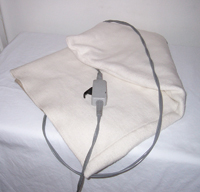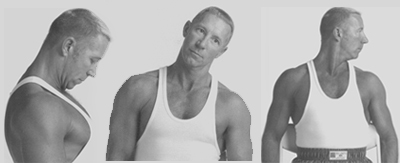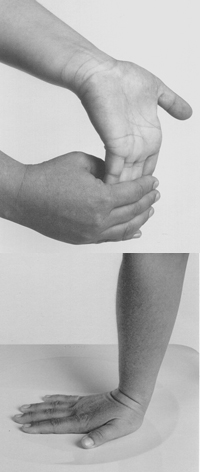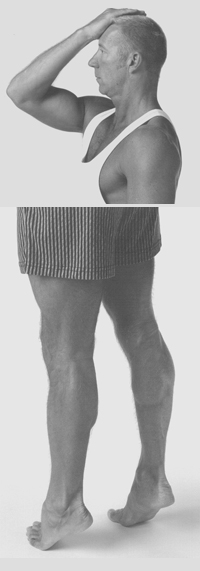
Features
Practice
Technique
Self-Care: A Reference Guide
What Does Cold Do?
This is an application that has a temperature between 0 and 18 degrees
Celsius (for example, ice cubes in a plastic zip-lock‘ bag), not a
topical room-temperature cream or lotion with a cooling effect.
September 29, 2009 By Fiona Rattray RMT
People can sometimes be confused about when to use a specific self-care application. Use this handy section as a reference guide.
 Cold
Cold
What Does Cold Do?
This is an application that has a temperature between 0 and 18 degrees Celsius (for example, ice cubes in a plastic zip-lock‘ bag), not a topical room-temperature cream or lotion with a cooling effect.
- Cold applied locally reduces the temperature of the skin, then muscles and joints. Muscle tissue may stay cold for up to 45 minutes after the source is removed.
- Local blood vessels constrict, reducing the blood flow to the area.
- With an injury, cold causes decreased inflammation, swelling and muscle spasm. The blood also becomes thicker, reducing bleeding.
- Pain is decreased by the cold either blocking pain transmission or acting as a counter-irritant.
- Connective tissue becomes less flexible when cold.
- There is a temporary stimulating effect.
- When using cold, a person experiences the following stages over several minutes: sensation of cold; tingling or itching; aching or burning; then numbness (Hooper, 1996).
When to Use Cold
- Acute injuries such as sprains, strains and bruises (from the moment of injury up to three days after; with severe injuries continue to use cold if pain, heat and swelling are present for longer)
- Flare-up of overuse conditions such as tendinitis (ice massage cup)
- Carpal tunnel syndrome (arm bath to reduce swelling)
- Migraine headaches (to head once headache has happened)
- After a therapist uses cross-fibre friction technique (gel pack)
Examples of cold applications:
- Cold gel pack: wrap in a clean towel to prevent the skin from freezing, then place over the area. Use a tensor bandage to keep it in place.
- Cold arm or foot bath: use a sink for an arm bath and a plastic basin for a footbath; immerse the arms to the elbows, or the feet to the ankles for up to a minute; dry the skin thoroughly afterward.
- Ice massage cup: take a paper cup filled with water and put in freezer, when frozen, tear down the paper to expose the ice, then cover with some plastic film to keep it from dripping; rub over affected area
- Cold applications should not be used for longer than 30 minutes at a time.
Don’t Use Cold If …
- Raynaud’s disease or circulatory insufficiency is present
- Decreased skin sensitivity to temperature is present
- The person has cold sensitivity (“cold allergy”)
- The person feels chilled
 Heat
Heat
What Does Heat Do?
An application that has a temperature between 36 and 45 degrees Celsius (for example, a thermophore or electric moist-heat pad which has an on-off control), not a cream or lotion with a heating effect.
- Heat applied locally causes an increase in the temperature of skin and muscle tissue which may persist for up to an hour after the application is removed.
- Local blood vessels dilate and the blood flow is increased to the tissue below the heat source; circulation to the skin is also increased distally. There is an increase in local metabolism and sweat production.
- Pain perception diminishes because the heat decreases the speed of nerve conduction.
- Muscle tone and spasm are reduced.
- Connective tissue becomes more flexible.
- Blood flow increases in the opposite limb due to a reflex reaction.
- There is a sense of relaxation and sedation with heat applications.
When to Use Heat
- Use with chronic conditions such as injuries two weeks or more after the injury
- Fibromyalgia
- Osteoarthritis
- Muscle tension headaches
- With a cold, sinusitis or respiratory tract infection (use steam inhalations)
- To relax (full body bath)
- Before a therapist uses connective (fascial) tissue techniques or stretching
- After a therapist treats trigger points
Examples of hot applications
- Thermophore (Heating Pad): place a clean towel over the area to be treated, then put the thermophore on top for up to 10 minutes; check that the skin is not becoming too hot during use; never lie on a thermophore
- Wax bath: this commercial temperature-controlled bath contains melted paraffin wax with a small amount of mineral oil added to prevent the wax from crumbling when it is applied to the skin; dip the hand or foot in the wax six to ten times, allowing the wax to cool between dippings; then place a plastic bag over the hand or foot to protect surfaces from wax; wrap in a towel to retain heat for up to 20 minutes; peel off wax and dispose of it.
- Full body bath: temperatures above 38 degrees may be too stimulating especially before bed; have a cool cloth for the forehead and some drinking water handy during the bath; herbal extracts or half a cup of Epsom salts can be added to the water; soak for up to 15 minutes
- Steam inhalations: fill a bowl with water that has been boiled; put the bowl on a table and sit in front of it; place a large towel covering your head, shoulders and the bowl; avoid contacting the bowl; close your eyes and inhale the steam for up to 10 minutes; if it’s too hot, allow some cooler air in; have a cool cloth to wipe your face afterwards
Don’t Use Heat If …
- An acute injury is present (heat increases bleeding and swelling)
- Circulatory pathologies such as hypertension are present (especially with prolonged or large applications)
- Decreased skin sensitivity to temperature is present
- Acutely inflamed joints, skin burns or infection present
- Person has hypersensitivity to heat
Many people with multiple sclerosis don’t tolerate large heat applications such as full body baths very well.
Contrast
Contrast = Heat then Cold
Alternating heat then cold causes a flushing effect: first the blood vessels dilate, then contract. This causes an overall increase in local circulation and tissue healing, and a reduction of edema (swelling).
- The ratio of heat to cold is 3:1; commonly done as three minutes of heat, one minute of cold; repeat this three times for maximum effect.
- The greater the difference between hot and cold temperatures in the applications, the greater the effect on the local circulation.
- Always end with a cold application to prevent congestion.
When to Use Contrast
In the subacute stage of healing, approximately two days to two weeks after an injury (the acute symptoms of inflammation, swelling and heat should be diminishing, since using heat on an acute injury is contraindicated).
Examples of Contrast Applications
- Arm or foot baths: for contrast arm baths, fill one side of a double sink with warm or hot water, the other side with cool or cold water; place both arms in the warm side first, then the cool side; repeat three times; for contrast foot baths, use two plastic basins.
- Compresses: have a basin of hot water and a basin of cold water; dip one cloth in the hot water, wring it out and place on the area; dip the other cloth in the cold water, wring it out and replace the hot compress with the cold one.
 Range of Motion
Range of Motion
What Does AF Range of Motion (ROM) Do?
ROM is the motion allowed by the shape of a joint and the soft tissues around it.
- In Active Free or AF ROM, the person moves the joint(s) through the pain-free, unrestricted range. This maintains the range, proprioception (knowing the joint position), circulation and lymphatic flow. It also reduces the recovery time from an injury.
When to Use AF ROM
- Recovering from an acute, subacute or chronic injury
- As part of a daily exercise program
An example of AF Range of motion
Slowly take your neck through a complete, pain-free range of motion.
- Starting from the head-upright, neutral position, bring your chin as close to your chest as you can, then return to the neutral position.
- Without moving your shoulders, try to bring your left ear to your shoulder, move back to the neutral position, then bring you right ear to your right shoulder and back to neutral. Was the motion symmetrical?
- Again without moving your shoulders, turn your head to look as far over your left shoulder as possible, then do the same to the right. How far did you get in each range?
- Lastly, tilt your head to look up towards the ceiling.
Don’t Use Range of Motion If …
You move into a range that is painful! Movement is at a speed and within a range that does not cause pain.
 Stretching
Stretching
What Does Stretching Do?
Stretching lengthens soft tissue. A tight muscle has undergone a mild adaptive shortening, usually due to inactivity.
A tight, shortened muscle becomes weaker since it can’t develop its peak tension. There are many kinds of stretching, but for self-care, the most frequently used is called self-stretch. These are performed slowly and held for up to 30 seconds.
When to Stretch
- Before or after an activity
- During the workday to maintain range of motion
- When regaining full range of motion in the subacute or chronic stage of an injury
An example of a self-stretch
To stretch your right wrist flexors, straighten your right elbow and hold that arm out in front of you. Bend your wrist back into extension so that your fingertips point towards the floor. Now take your left hand and grasp broadly over the palm-side surface of the right fingers and slowly bring them further into extension. Hold this for 15 to 30 seconds. You’ll feel the stretch in the fingers and forearm muscles.
Don’t Stretch If …
- You have an acute injury (can further damage healing tissue)
- Joint inflammation due to trauma, infection or an inflammatory arthritides such as rheumatoid arthritis is present
- The joint crossed by the muscle to be stretched is hypermobile (previous ligament damage to joint; or the person is “double jointed”)
- You stretch quickly or ballistically (“bouncing” the stretch): either will cause a reflex contraction of the muscle being stretched and should be avoided.
 Strengthening
Strengthening
What Does Strengthening Do?
By applying resistance to a contracting muscle, over time its strength, endurance and overall physical function will improve. In self-care, resistance can be supplied by rubber tubing or weights. The idea is to provide safe resistance that does not re-injure the tissue. Strength is increased by increasing the length of time of the contraction; by increasing the number or repetitions of an exercise or by increasing the resistance to the contraction.
- In Active Resisted (AR) Isometric Exercise, the muscle contracts isometrically, or without any motion visible at the joints. The muscle strengthens only in the range where the exercise is performed.
- In Active Resisted (AR) Isotonic Exercise, the muscle contracts isotonically, or with motion. Concentric contraction occurs as the muscle shortens, while eccentric contraction happens as the muscle lengthens. Strength occurs throughout the range that the muscle is moved.
When to Strengthen
AR isometric exercise is used to maintain muscle strength in the early stages of healing when tissue is fragile, and if a joint is unstable or is immobilized. AR isotonic exercise is used to increase muscle strength once full range of motion has been recovered. Stretch, then strengthen!
An example of strengthening
AR isometric strengthening of the front (anterior) neck flexors is demonstrated by placing the palm of your hand on your forehead; without moving, push your head into your hand and hold for 15 seconds. AR isotonic strengthening of gastrocnemius and soleus (calf muscles) using body weight as the resistance; stand up and raise you heels off the floor; stay on the balls of your feet for three seconds, then slowly lower your heels to the ground.
Don’t Strengthen If …
Acute injury, severe pain or paralysis is present.
Print this page